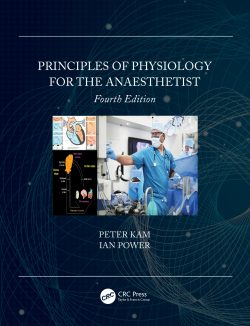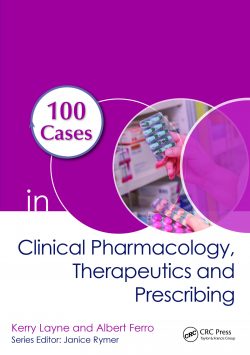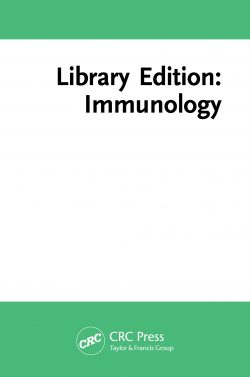This book introduces the exciting field of orthobiology, which will usher in a new array of therapeutic approaches that stimulate the body’s natural resources to regenerate musculoskeletal tissues damaged by trauma or disease. The book addresses a range of key topics and discusses emerging approaches that promise to offer effective alternatives to traditional treatments for injuries to bone, cartilage, muscles, ligaments, and tendons. It explains in detail how a variety of innovative products, including biomaterials, growth factors, and autogenous cells, together provide the basis for the regeneration of these musculoskeletal structures and how recent scientific progress has created unique opportunities to address pathological situations that until recently have been treated with unsatisfactory results. The authors are experts from across the world who come together to provide a truly global overview. The book is published in collaboration with ISAKOS. It will be invaluable for all with an interest in this area of medicine, which has already attained huge popularity in Orthopaedics and Sports Medicine and has also attracted the attention of the lay public.
Bio orthopaedics: where are we now?- Optimization of Natural Healing.- Amniotic-derived biologics for connective tissue healing: Our best chance at tissue regeneration?- Physiology of the musculo-skeletal system, homeostasis, injury response and healing process.- Blood Products.- Biomaterials; Synthetic Tissue Augmentation.- Cell Culture.- Host environment; Scaffolds and Signaling (Tissue Engineering).- Stem Cells synovial derived.- Current state for clinical use of stem cells and platelet rich plasma.- Genes.- Orthopedic sports disorders : genetic and molecular aspects.- The Overview Orthobiology and Biomechanics.- The Challenge and the Promise of Bone Marrow Cells for Human Cartilage Repair.- Clinical Orthobiologic Approach to Acute Cartilage Injury.- Muscle anatomy, injury mechanism, natural healing and possible disability.- Emerging Orthobiologic Approaches to Muscle Injuries.- Clinical Orthobiologic Approach to Muscle Injuries.- Tendon anatomy, injury mechanism, acute versus chronic tendinopathies, natural healing and possible rupture.- Emerging Orthobiologic Approaches to Tendon Injuries.- Ligament anatomy, injury mechanism, different possibilities of healing according to anatomic location.- Relationship Between Biomechanics and Healing of Ligament Injuries: Natural evolution of untreated ligament injuries.- Emerging Orthobiologic Approaches to Ligament Injuries.- Clinical Orthobiologic Approach to Ligament Injury.- Bone anatomy and the biologic healing process of a fracture.- Emerging Orthobiologic Approaches to Fractures.- Clinical Orthobiologic Approach to Failure or Delay in Bone Healing.- Biological approach to avascular necrosis.- Natural history of meniscal injury.- Orthobiologics and meniscus healing.- Meniscus restoration.- Meniscal scaffolds evolution in the last 20 years.- Anatomy and physiology. Classification of cartilage lesions: acute versus chronic.- O.C.D. classification and natural story.- Emerging Orthobiologic Approaches to Cartilage Injury.- New approach to early O.A. of the patello femoral joint.- Clinical Orthobiologic Approach to Acute Cartilage Injury.- Future prospective.- Collagen membrane in repair cartilage defects.- The development of meniscal scaffolds.- Orthobiologics and regulations in different part of the world.- Scaffold-free stem cell-based tissue engineering to repair musculoskeletal tissues.- Orthokine treatment and/or treatment with ADSC for O-A of the knee.- Cell-free scaffolds for the treatment of chondral and osteochondral lesions.- Scaffolds for meniscus regeneration.- Joint congruence restoration in big osteochondral defects – the use of mesenchymal stem cells with the “sandwich” technique.- Biological reconstruction in patients with osteochondral defects: Postoperative management and MRI monitoring..- The role of biologic treatments for spine disorders.- How to teach new orthobiologic treatments.- Use of Adipose Derived Stem Cells in Sports Medicine.- Molecular aspects of using stem cells treatment.- The use of animal models and robotics to validate new bio therapies.- Meniscus Scaffolds: Past, Present and Future.
Joao Espregueira-Mendes, MD, PhD, has been Professor of Orthopaedic Traumatology and Chairman of the Orthopaedic Department at Minho University, Portugal, since 2005. In addition, he is Director of Clínica do Dragão – Espregueira-Mendes Sports Centre – FIFA Medical Centre of Excellence, FC Porto Dragão Stadium, Porto, Portugal. His further posts include Orthopaedic Surgeon of FC Porto and Senior Researcher in Biomaterials, Biodegradables, and Biomimetics in the Department of Polymer Engineering at Minho University. Dr. Espregueira-Mendes was President of the European Society of Knee Surgery, Sports Trauma and Arthroscopy (ESSKA) from 2012 to 2014 and he is Treasurer and Chairman of the Publication Committee of ISAKOS. He is a member of the editorial board of Knee Surgery, Sports Traumatology, Arthroscopy.
John G. Lane, MD, is a clinician in San Diego who has a voluntary Clinical Associate Professor appointment at the University of California, San Diego in the Department of Orthopedic Surgery. Dr. Lane is a member of AAOS, AANA, AOSSM, ISAKOS, and ICRS. Currently he is a member of the membership committee of ICRS and the education committee of ISAKOS. His clinical field of practice focuses on complex knee and shoulder injuries. He has collaborated with Professor Amiel at UCSD since 1989, working in the fields of ligament and cartilage. He has received grants for a variety of research projects and is currently collaborating with Dr. Alberto Gobbi of Milan in evaluating the effects of adipose-derived stem cells in the treatment of articular cartilage lesions. He has published 26 peer-reviewed manuscripts and one book chapter.
Mustafa Karahan, MD, is Adjunct Professor of Orthopaedics at the Department of Orthopaedics, Acibadem University, Istanbul, Turkey, where he is actively involved in CASE (Center for Advance Simulation and Training), which hosts European Basic Arthroscopy Courses. Dr. Karahan is an internationally active orthopedic surgeon who works mainly on sports traumatology, knee surgery, shoulder surgery, and arthroscopy. He founded the Marmara University Sports Sciences and Health Research Center in Istanbul in 2004. Dr. Karahan is an Executive Board Member of ESSKA and Editor of ESSKA Academy, the online teaching portal of ESSKA. He is also the vice Chair of the Publication Committee of ISAKOS. He has published more than 70 scientific articles in peer-reviewed journals and is an editorial board member of the American Journal of Sports Medicine (AJSM), Arthroscopy, KSSTA, and Journal of ISAKOS.
This book introduces the exciting field of orthobiology, which will usher in a new array of therapeutic approaches that stimulate the body’s natural resources to regenerate musculoskeletal tissues damaged by trauma or disease. The book addresses a range of key topics and discusses emerging approaches that promise to offer effective alternatives to traditional treatments for injuries to bone, cartilage, muscles, ligaments, and tendons. It explains in detail how a variety of innovative products, including biomaterials, growth factors, and autogenous cells, together provide the basis for the regeneration of these musculoskeletal structures and how recent scientific progress has created unique opportunities to address pathological situations that until recently have been treated with unsatisfactory results. The authors are experts from across the world who come together to provide a truly global overview. The book is published in collaboration with ISAKOS. It will be invaluable for all with an interest in this area of medicine, which has already attained huge popularity in Orthopaedics and Sports Medicine and has also attracted the attention of the lay public.
Offers a detailed introduction to the exciting field of orthobiology
Examines the role of a variety of innovative products and approaches
Explains how recent scientific progress has created opportunities for much-improved outcomes
Provides a global perspective





